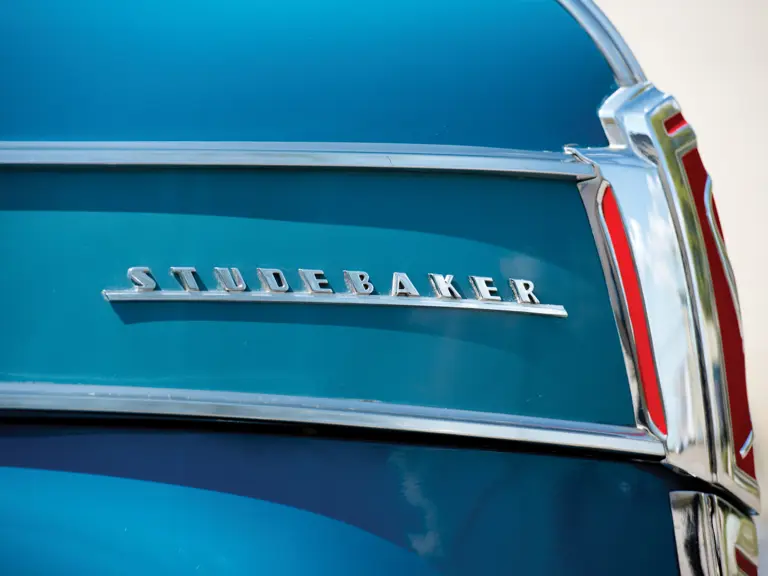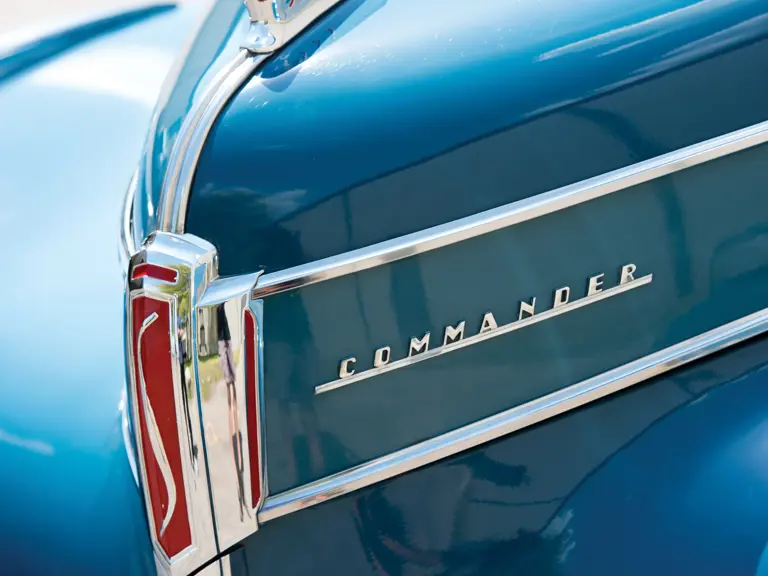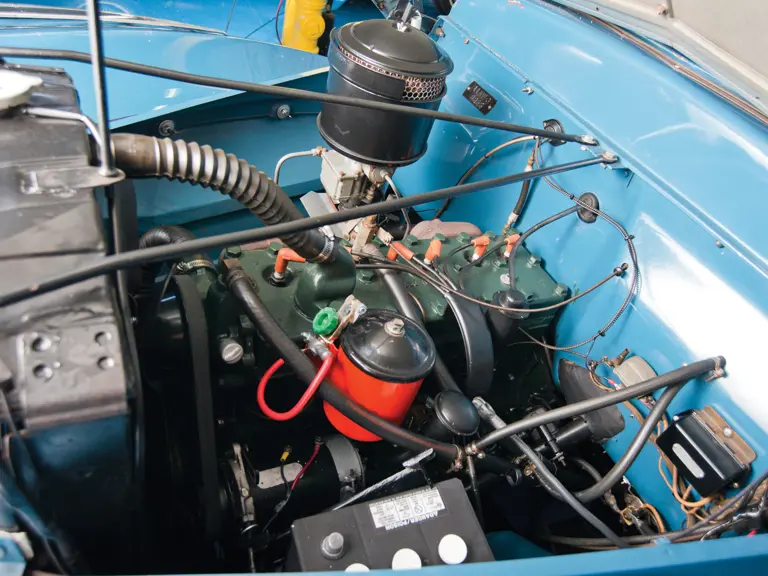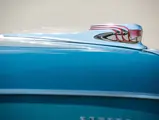94 bhp, 226.2 cu. in. L-head inline six-cylinder engine, three-speed manual transmission, independent front suspension with transverse leaf springs, semi-floating rear axle, and four-wheel hydraulic drum brakes. Wheelbase: 119 in.
In October 1932, Studebaker teetered on the verge of bankruptcy, following a failed merger with the White Motor Company. Receivership followed in early 1933, but a massive reorganization, including the divestment of the failing Pierce-Arrow firm and the termination of the low-priced and doomed Rockne line, returned the company to its earlier viability. Finely designed models, offering outstanding economy for their size, and a successful $10 million advertising campaign, engineered by the new company president, Paul G. Hoffman, in 1934, confirmed that Studebaker was indeed back on the scene.
Studebaker continued to offer its popular combination of solid engineering and sheer value through the remainder of the 1930s. However, its status as America’s top independent automaker was reconfirmed with the leading-edge design of the 1941 model line, which was styled by noted industrial designer Raymond Loewy’s staff. New and thoroughly modern design elements included a lower, wider stance, eliminated running boards, inclined die-cast side grilles, an enlarged greenhouse, and air vents in the sides of the cowl. The cars were lower in overall height, but headroom was maintained, and all Studebakers adopted wider, more comfortable seats.
Acquired by Mr. and Mrs. Kughn from the noted collection of Art Astor in California, this 1941 Commander Sedan is a former AACA award-winning example, which benefits from an older comprehensive restoration. It is a DeLux-Tone model and features a dramatic two-tone blue exterior, as well as such accessories as period-style amber fog lamps, a spotlight, rear fender skirts, an AM radio, a three-spoke steering wheel, a heater/defroster, a clock, and, for modern touring, added seat belts with Studebaker logos. The engine bay and six-cylinder engine are tidy in their presentation, with proper finishes throughout, and overall, the car presents well as a nice driver that can be used and enjoyed with pleasure.
While a style leader of their time, the last pre-war Studebakers are seldom seen today. Well-maintained by past and present enthusiast owners, this rarely seen example, in its “DeLux-Tone” livery, will certainly make a fine, eminently “runnable” addition to any collection of great American cars of the 1940s.



















 | Plymouth, Michigan
| Plymouth, Michigan















